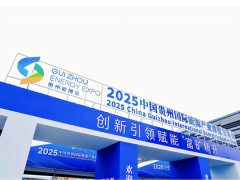???? 據(jù)2月7日The Nation報(bào)道,Rystad Energy表示,今年世界排名前30位的大油井項(xiàng)目,其中大部分將會(huì)在北美、南美和非洲地區(qū)進(jìn)行鉆探。值得一提的是,這個(gè)排名是通過對(duì)包括成功率高低及其對(duì)運(yùn)營(yíng)商的重要性等因素進(jìn)行一系列評(píng)估后得出的。
????這家總部位于奧斯陸的咨詢公司在一份最新的報(bào)告中表示:“美洲和非洲仍是勘探大項(xiàng)目關(guān)注的熱點(diǎn)地區(qū),有19口油井在這些地區(qū)進(jìn)行勘探,其中,北美7口、南美6口、非洲6口。”
????報(bào)告稱,名單上46%的油井由大型石油公司運(yùn)營(yíng),這顯示了石油巨頭對(duì)高風(fēng)險(xiǎn)、高回報(bào)前景油井的持續(xù)投資意愿。在過去四年,全球共鉆探了120口井,但只有50口獲得了石油發(fā)現(xiàn)。2017年以來,這些大油井最集中的地區(qū)是歐洲西北部,共有22口,其中,挪威14口、英國(guó)6口、愛爾蘭2口。
????值得一提的是,法國(guó)道達(dá)爾(Total)石油公司在安哥拉的Ondjaba-1油井和在納米比亞的Venus油井也在這份名單上。此外,這些油井還包含在埃克森美孚(ExxonMobil)在巴西水域的Opal勘探計(jì)劃和殼牌(Shell)在墨西哥的海上鉆探計(jì)劃中。
????Rystad表示:“今年大多數(shù)在計(jì)劃中的勘探大項(xiàng)目都希望可以獲得巨大的前景,如果成功,將顯著增加2021年新增的可開采儲(chǔ)量。預(yù)計(jì)這些油井的可采儲(chǔ)量將超過130億桶。”
????Rystad表示,去年因新冠肺炎疫情,油氣井的鉆探受到影響,但總體結(jié)果仍是積極的。2020年,勘探成功率從2019年的32%升至41%,發(fā)現(xiàn)的石油儲(chǔ)量高達(dá)32億桶,創(chuàng)四年來新高。原計(jì)劃2020年共有35口大型油井,但從目前的情況看,其中16口被推遲到2021年或更久以后,6口已被擱置。
????Rystad高級(jí)分析師Taiyab Zain Shariff表示:“隨著市場(chǎng)狀況改善,順應(yīng)當(dāng)前發(fā)展局勢(shì),預(yù)計(jì)從這些推遲的油井中開采的石油將通過管道輸送。這意味著今年大型勘探活動(dòng)可能反彈至2019年的水平。美洲地區(qū)的勘探數(shù)量或?qū)⑴c去年持平。其中,墨西哥將作為勘探主導(dǎo)地區(qū),在那里將有5口油井有望勘探成功。”
????由于歐佩克+的減產(chǎn),油價(jià)在過去幾周有所回升。眾所周知,沙特阿拉伯還宣布在2月和3月單方面額外減產(chǎn)100萬桶/天,以支撐石油市場(chǎng)。
????朱小慶吉 摘譯自 The Nation
????原文如下:
????Majority of world’s high impact oil wells to be in Africa and the Americas in 2021
????The majority of the world’s top 30 high-impact oil wells will be drilled in North and South America and in Africa this year, according to Rystad Energy.
????“These regions [the America and Africa] continue to be the hotspots for high-impact exploration, with 19 of the top 30 wells, seven in North America, six in South America and six in Africa,” the Oslo-based consultancy said in a new report.
????Rystad classifies wells as high-impact after assessing a number of factors including the size of the prospects and their significance to the operator.
????Major oil companies operate 46 per cent of the wells included in the list “showcasing their continued appetite to invest in high-risk, high-reward prospects”, it said. In total, 120 high-impact wells have been drilled globally over the past four years but only 50 have resulted in discoveries. The region with the highest concentration of high-impact wells since 2017 has been Northwest Europe with 22, of which 14 were drilled in Norway, six in the UK and two in Ireland.
????The list includes ExxonMobil’s Opal prospect in Brazilian waters and Shell’s offshore drilling plans in Mexico. It also includes French oil company Total’s wells Ondjaba-1 in Angola and Venus in Namibia.
????“A majority of this year’s expected high-impact wells are targeting large prospects which, if successful, could significantly increase the new recoverable volumes of 2021,” Rystad Energy said. “All in all, the pre-drill resource potential of this year’s top-30 line-up is estimated to surpass 13 billion barrels of oil equivalent.”
????Drilling of high-impact oil and gas wells was affected last year due to the global pandemic, but “overall results were nevertheless positive”, according to Rystad. The success rate rose to 41 per cent in 2020 from 32 per cent the year before and pushed discovered volumes to 3.2 billion barrels of oil equivalent, a four-year high.
????A total of 35 high-impact wells were originally planned for 2020. Out of these, 16 were delayed until 2021 or beyond and six were shelved, according to the report.
????“With market conditions improving, we expect delayed wells to be moved through the pipeline along with new prospects,” Taiyab Zain Shariff, senior analyst at Rystad Energy, said.
????“This means high-impact activity could rebound to 2019 levels this year. The Americas region is likely to almost match last year’s number of high-impact wells, with Mexico as the driving force with five prospects.”
????Oil prices have recovered in the last few weeks, thanks to production curbs by Opec and its allies. Saudi Arabia also announced a surprise unilateral one million barrels per day production cut in February and March to support oil markets.







